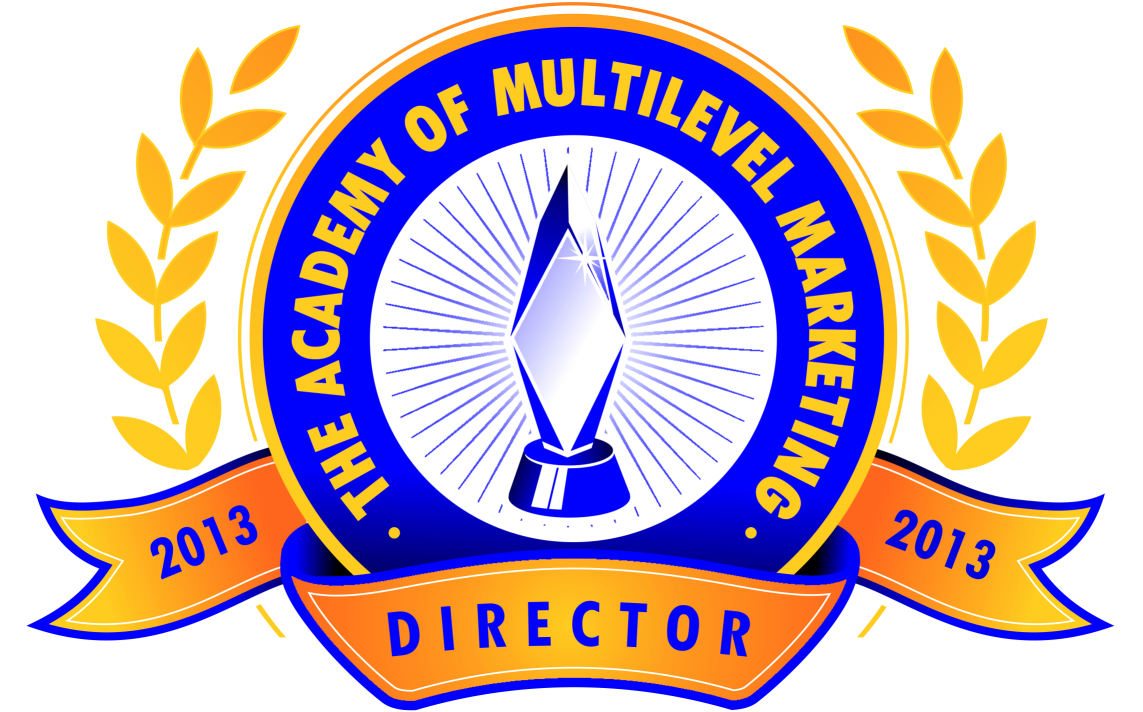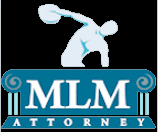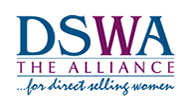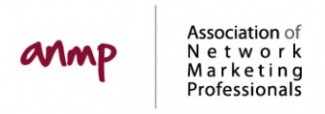By Len Clements (c) 1998
Of over 6,000 active network marketers who were surveyed from 1990 to 1999, 55% said they were focusing on building one, and just one, network marketing company. Nineteen percent said they were an active distributor for two MLM companies. Three or more MLM programs were being simultaneously pursued by 26% of those surveyed. The record, to my knowledge, for most MLM opportunities pursued at one time is 36!
So, 45% of all those surveyed are basing their MLM careers on a gross fallacy of logic.
The rationalization for trying to build a downline in more than one MLM program usually includes the quite factual statement that over 96% of all MLM companies fail, thus we should “diversify” our effort. The dread of building a successful organization only to see it evaporate when the company falters can be an enticing motivation to build a downline in more than one deal. It can also create a self fulfilling outcome. By diversifying your efforts you actually increase you chance of failure in all of the opportunities you’re working!
This same logic was employed by my fourth grade teacher just before a field trip (true story). We were told to bring $20 for spending money in the form of four $5 bills. Then, she suggested, we could put one bill in four different pockets thus decreasing our chances of losing the whole 20 bucks (because we might have a hole in our pocket). But even at the age of nine I was old enough to realize that while I was reducing my odds of losing it all, I was quadrupling my chances of losing something. At best, this strategy seemed to be a break-even proposition.
Let’s apply this same logic to other situations in our lives. Since there is always the threat of being laid off from your job, or your employer going out of business, let’s work three or four jobs. And to keep with the same logic used by multi-MLM promoters, you’d be working all three or four of those jobs at the same time. Or how about the high divorce rate? Over half of all marriages in this country now end in failure. Well, let’s marry five people. That way if one relationship fails, we’ve got the other four to hold the family together. What about religion? There are dozens, if not hundreds, to choose from. Since there is (allegedly) only one true path to God, let’s put our faith in Christianity, Hinduism, Buddhism, and Judaism — that way we’re sure to be covered.
Obviously, to do any of the things I’ve just described would be absurd. Clearly, in every situation your chances for success would be reduced to zero. Yet this is considered a very practical, common sense approach by some MLM enthusiasts. They suggest that if you could have success in one MLM program, you could have even more success if you joined several. But the one constant, absolute fallacy that exists in all of these scenarios is that you can give 100% of your attention to more than one thing! Any fourth grader who got a C+ in math will tell you that’s simply an impossibility. For every minute you’re building the downline in Company A, you’re not building the downline in Companies B, C, D and E. Some MLM portfolio promoters will tell you that, in fact, they are. They somehow manage to get folks to join several MLM companies at once. Besides the serious legal implications (more on that in a moment), it’s also very likely a misleading ploy. Here’s the catch: They only get them to enroll — that’s all. It’s easy to get people to fill out a few lines on an application, or call an 800 number. Hey, let’s create an even “better” recruiting system where all your prospect has to do to join is make eye contact with you. Then you can exclaim in your fax blasts and on-line spam how your system has “built a downline of over 10,000 people in less than 30 days!!!” (unfortunately, I’m only slightly exaggerating). Think about it. Why would someone buy qualifying product from five or six MLM programs that they’ve just joined? What would they be qualifying for? They have no downline!
Actually, it is far more common to see MLM portfolio promoters build their downlines in each company on a serial basis rather than parallel. In other words, they get you to join Company A, then once your income has reached the point where it will pay for the qualifying order in Company B they instruct you to join (or automatically place you in) Company B. Once your income from B will pay for the monthly qualifying order in Company C, you join your third company, and so on. So, by the time you’re in all six companies you can finally afford your dream home — assuming your mortgage company will accept the mountain of vitamins and shampoo you’ve collected as payment.
Over the last few years, in an attempt to resolve this challenge, the trend has been to fill the portfolio full of service companies. The result is, yes, less stockpiling of product – and far less income. The portfolio collapses even if it does succeed in building a significant downline because no one can make any money from 1/4% of a $25 phone bill or 2% of a $9.95 internet access fee, no matter how many such companies you’re in.
Another argument put forth by multi-program builders is that it’s okay to build more than one opportunity as long as the products don’t compete. However, as we all know, the business opportunity is a product unto itself – and it will always compete. And there can only be one “best” opportunity. If one company sells nutritional products, another sells water filters, and another sells long distance service, you should judge each based on fundamental economics. Which has the potential to move the most commissionable sales volume (based on price, quality and market size), and which pay plan will best reward you (based on your income agenda) for creating that sales volume? Also, which company is most likely to remain viable, and which offers the most efficient, proven support system? If graded in all four categories, only ONE company in the portfolio will come out on top. So why bother spending time, effort and money on the inferior opportunities? The standard response (I’ve heard them all) is that one prospect might be more interested in selling long distance service while another might be into health and nutrition. It’s good to have something to offer each of them. But let’s be clear on what these two prospects are really looking for — the opportunity to make money! If you are convinced the best financial opportunity is in tangible, consumable health products, then explain to the long distance guy why he’s looking in the wrong place. In fact, if you honestly believed there was more money in nutritionals than long distance, you would be doing this prospect a disservice by not trying to steer him towards what you believe is the “best” financial opportunity. Nutritionals and long distance are just two arbitrary examples. This would apply to whatever type of MLM program you thought was the one, very best way to earn a living in this business.
The illusion that is exploited in many MLM portfolio schemes is that someday perhaps 1,000 total people join your portfolio and you’ll then end up with 1,000 people in, say, five different MLM programs. Actually, it would likely take 4,000 – 5,000 total people. Sure, a few will join multiple companies, but most will be split between one or two. So, worst case, those 1,000 people will be made up of 200 in each of the five companies. You might be thinking, “So what? If I could make $5,000 from 1,000 people, who cares if it’s 1,000 in one or 200 in five?” Here’s another exploited illusion: The whole is equal to the sum of it’s parts. In reality, each MLM program will have quotas and qualifications, right? The higher the sales volume the greater and deeper the pay out. Plus, there would be substantially less attrition if you pulled all 1,000 into one program since far more people would have a downline. So, five little downlines would very likely NOT earn you the same as one big downline. Depending on the qualifications and type of compensation plan, you could potentially earn over twice the income by concentrating those 1,000 people into one organization.
Some folks suggest that you join multiple MLM programs to purchase their great products. They have a noble “industry first” attitude and don’t mind buying from competitors. This I totally agree with! I routinely buy products from four different MLM companies, but I focus 100% of my attention to building a downline in ONE.
The legal concern lies in the motivation to join an MLM opportunity. As myriad legal precedents would attest, we’re supposed to be joining MLM programs because we love the products and want to make money selling them to others. Commissions and bonuses are only supposed to be derived from product volume that would exist outside of the income opportunity (people would buy the products because they actually want them, not as a token act to meet a quota). Now, you tell me — when people are induced into joining a recruiting system based on enrolling in multiple MLM companies (because they’ll make more money and have more security that way), what is most likely the primary motivation to join? Company A’s great skin lotion? Company D’s mediocre 7.9¢ long distance rate? Come on. Most portfolio deals are heavily focused on recruitment, not product sales, and that’s a major regulatory red flag. There’s little wonder why some MLM companies forbid their inclusion in MLM portfolio schemes. Think about that. Why would they not want to be included? Wouldn’t it be better to share distributors with other companies than to not have them at all? The reason is legal, not financial.
If, hypothetically, the portfolio participants really are getting involved in all the companies to really market the products, then they now have to study and understand four, fix, six, maybe even ten different compensation plans and product lines! Think about the challenge most distributors go through just getting to fully comprehend the features and benefits of one plan and product line. Again, though, we’re optimistically assuming in this case that the participants actually care about the comp plan and products offered by the various companies.
Okay, so what if the one company you built in goes out of business? First of all, you only have to avoid start ups (those less than two years old) and your chances of picking a long term company skyrocket (ironically, most MLM portfolios I’ve seen over the years are made up of mostly start ups). Secondly, even if your company does go under, well, you’ll have to try to move them into another company. In other words, you’ll do the exact same thing the portfolio manager is going to try to do. Isn’t the one downline you focused on building just like your portfolio of one company? A portfolio manager would likely counter by suggesting it’s far easier to move the entire group in a portfolio system. With a well constructed portfolio deal the manager will have a database of the same downline that the failed company had, so he’ll attempt to automatically move the entire downline into the new replacement company in the portfolio. So, in that case, there’s absolutely no question that the products were secondary (if not completely irrelevant) to those people’s participation in the replacement company. If the group doesn’t follow the leader into the new company, then the “security” aspect was bogus; and if they do, the big red legal flag just got bigger and redder.
Of course, we really don’t have to theorize when it comes to MLM portfolio schemes. They are as old as MLM (over half a century). They proliferated in the late 80’s and literally dozens upon dozens came and went during the 90’s. In fact, the failure rate of MLM portfolio schemes is even greater than that of start up MLM companies (96% within two years). Today, I know of only one still in operation. It claims to be thriving, yet the majority of income appears to be coming from one, primary nutritional company.
Let’s just look at this logically. If pursuing multiple MLM companies is the way to go, then why, out of hundreds of portfolio deals over the years, with thousands of participants, not one person has ever maintained even a modest $5,000 monthly income? Sure, a few rare exceptions exist where someone is earning over $5,000 who is involved in more than one company. But it works somewhat the same way as the all time Major League home run record by a brother combo (767). Tommy Aaron hit 12, his brother Hank hit 755. So, if you earned $4,700 from one company, and $100 from three others, you could rightfully claim, “Len Clements is wrong! I’m working four MLM companies at the same time and I’m making $5,000 per month — so there!” Then I’d say, show me a $5,000 income from a portfolio of more than two companies with no more than half coming from any one company. Then there would be silence.
MLM is a 65 year-old industry, folks. Everything has been tried.
Everything you see today is just a variation of what’s already been done over and over. Portfolio schemes are one of the oldest, most tried concepts in MLM history. History doesn’t lie. Nor does the graveyard full of dead portfolio deals. If it works so well, if there are so many advantages to doing it this way, then why isn’t everyone doing it? In fact, pursuing multiple MLM programs is a concept that is almost unanimously discredited by the most successful MLM professionals working today (the ones whose methods you’d think would make the most sense to duplicate). The richest, most successful distributors all focused like a laser beam on building ONE downline.
It’s true, there’s a very high failure rate among MLM distributors. Perhaps one reason might be that 45% of them think they can give 100% to more than one opportunity.
Ask a fourth-grader to do the math.










